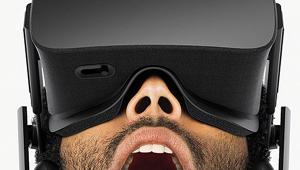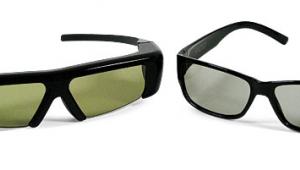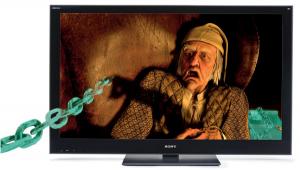Passive 3D Resolution Update

Tom Norton is currently reviewing the LG 55LW5600, a 120Hz passive-3D LCD TV, for Home Theater. In his communication with the company, an LG engineer in Korea explained that each eye actually sees the full 1920x1080 resolution, but not all at the same time. In the following discussion, keep in mind the difference between the lines of information—on a 3D Blu-ray, the visual information for each eye includes 1080 lines—and the lines on the display itself. Also, the TV converts 24 frames per second on the disc to 60fps.

As depicted above, in the first 1/120th of a second, the odd-line information for the left eye (1920x540) is displayed in the odd-numbered lines on the screen, while the odd-line info for the right eye (also 1920x540) is displayed in the screen's even-numbered lines. Then, in the next 1/120th of a second, the even-line info for the left eye is displayed in the screen's odd-numbered lines, and the even-line info for the right eye is displayed in the screen's even-numbered lines.
Thus, in 1/60th of a second, the odd and even lines of the left-eye information are displayed sequentially in the odd-numbered lines on the screen, and the odd and even lines of the right-eye information are displayed sequentially in the screen's even-numbered lines. In other words, each eye sees 1920x1080, but this information is presented in two passes, much like an interlaced display. In this case, however, the two sets of information are displayed in the same set of lines—the odd-numbered lines on the screen for the left eye and the even-numbered lines for the right eye.
Like interlacing, this process is technically known as temporal compression, because it reduces the amount of information being displayed at any given instant, and it relies on persistence of vision to smooth out the overall image. However, also like interlacing, it can exhibit visible artifacts, such as jaggies, judder, and softness. And there are still those thin, black horizontal lines that are most visible in onscreen text and when sitting close to the screen, which you want to do for 3D.
I don't know if other manufacturers, such as Vizio and Toshiba, display the left and right images in this way. If so, it does seem to explain why the image on passive-3D LCD TVs looks somewhat sharper than I would expect if each eye was seeing only 1920x540.
- Log in or register to post comments
























































